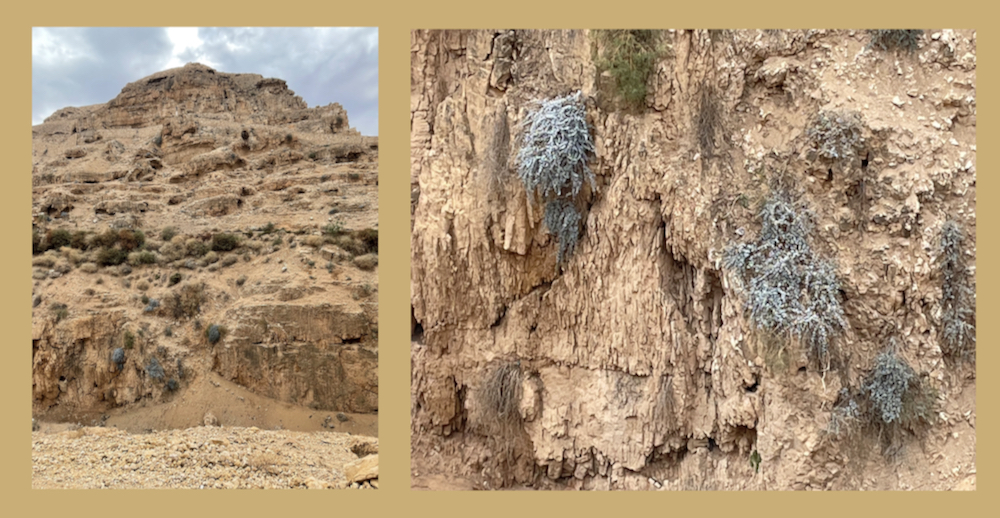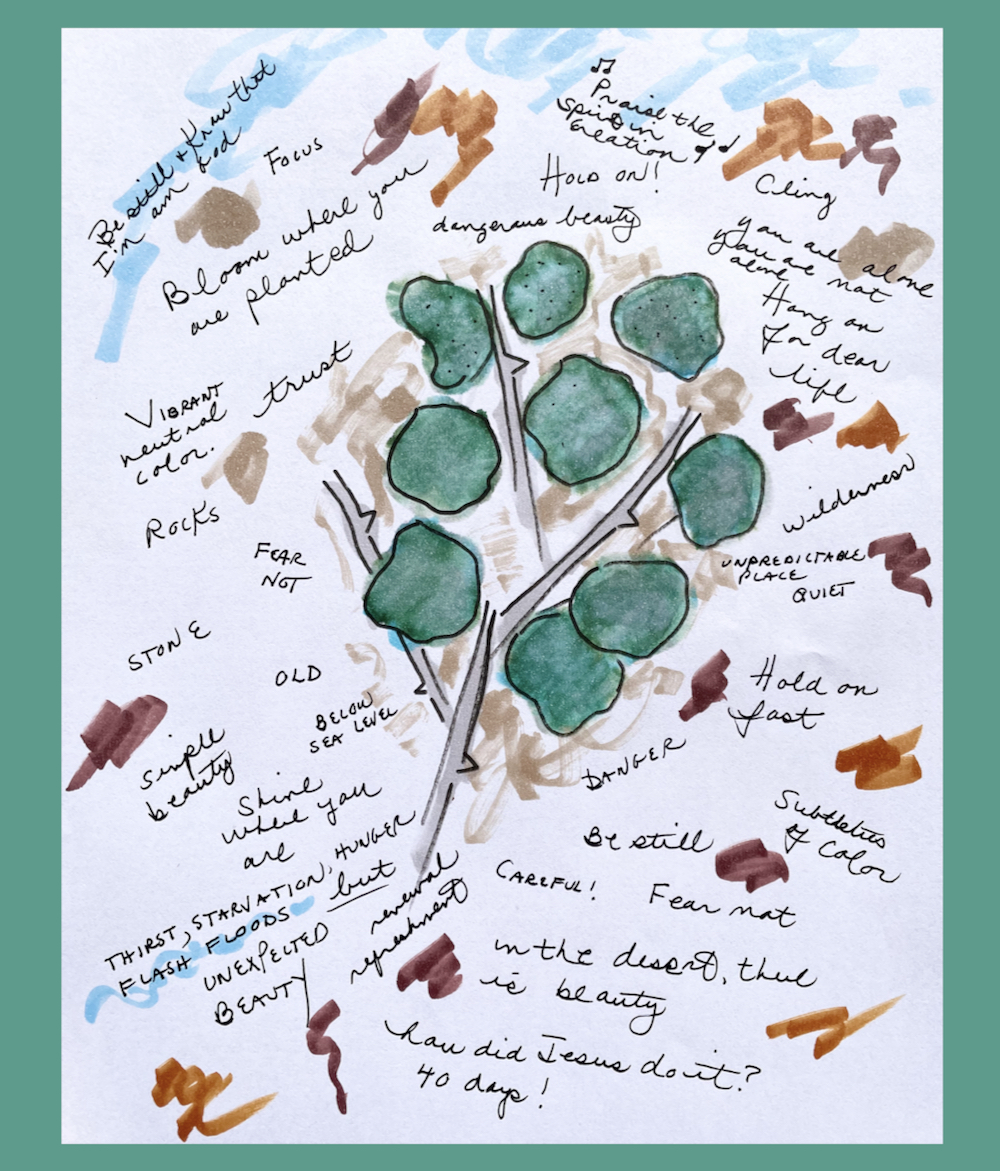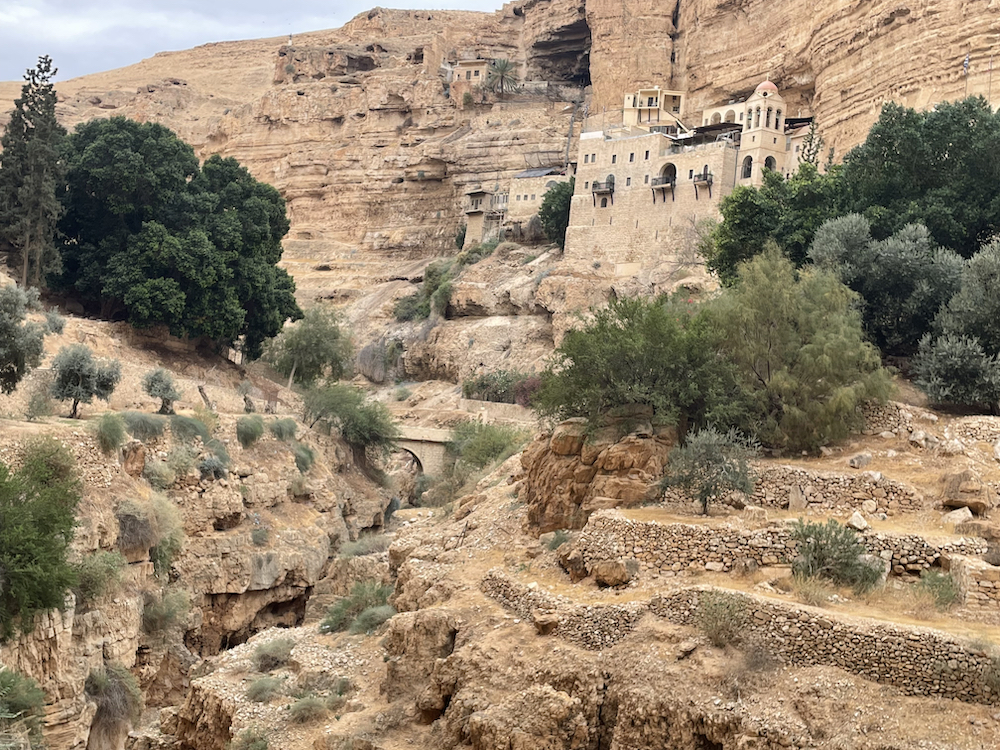And Jesus, full of the Holy Spirit, returned from the Jordan and was led by the Spirit in the wilderness for forty days, where for forty days he was tempted by the devil. Luke 4, 1-2 NRSV
Our goal in the wilderness was not forty days, nor a run-in with the devil. Four of the program staff from St. George’s College drove to the wilderness of Wadi Qelt on Friday for a four-hour Advent retreat. When I read “wilderness” as a child, I thought of the deep dark woods of Grimm’s fairy tales: dense thickets of trees, creepy and gnarled branches out to snag me, mythic beasts ready to eat me…. The wilderness where Jesus went is so different. It is desert, hundreds of square miles of it. And it is not fine-grained sand-dune desert. From the road, the rising dunes and hills look like sand, but they are mostly rock.
The desert wilderness is a hostile, ungenerous landscape for a lone 40-day pilgrim. But for four hours, it was a magnificent place to get still and escape the distractions of everyday life. After parking our car and saying, “No thanks” to the Bedouin invitations for a donkey ride, we walked down a steep path towards the Greek Orthodox Monastery of St. George. The monastery was first built around 500 CE with several destructions and reconstructions since. Our foursome had hoped to enter the monastery to spend time in the chapel with the icons, but the monastery was closed to visitors. We continued to walk on the path next to the Wadi (a streambed that is dry much of the year) and then split up to find separate places to spend time alone.
I did not bring retreat reading material with me or have a prayer agenda. The land, it turned out, was its own text, its own teaching, its own wordless prayer. I would not want to be stranded in this desert, but as I looked across the Wadi, I saw stark, unpredictable beauty. My earlier monochromatic impression of the landscape burst into color. There were so many shades of sand and rock and even pops of vegetation I had not noticed before. For most of the time I sat there, I could not take my eyes off of a particular plant, a blue-green shrub clinging to the rock. All sorts of words, images, and feelings came to me as I looked at the plant.

My time with the plant, I realized, was a Visio Divina, a contemplative way to pray in which we “see with the eyes of the heart.” This “seeing” and emptying our minds gives God the chance to break through and inhabit us. When we returned to the College, I doodled my image of the shrub called a Capparis. (None of my marker colors really capture the hue.) I wrote some of the words that came to me as I sat in the desert. I think God will continue to speak to me through this plant. If I hear or see anything new, I will add it to the doodle. The desert, at least for the short time I was there, was a place of unexpected generosity.



This was an amazing stop for us in our extra Israel time in Jan 2020- but my pre surgery knee required the donkey ride back out!
A bum knee would really hurt on that trek. Thank God for donkeys!
The desert is indeed a place of beauty. Seemingly not much to see, but given the time to pay attention there is a feast for the eyes. We lived about 45 minutes outside Riyadh, Saudi Arabia back in early 80’s. I loved the apparent emptiness. Same with our years in El Paso…apparently lifeless desert, but it was teeming with life….just needed to look.
I love the phrase “apparent emptiness.” And yet it is so full of life, as you say.
Such a blessing to have received these posts from the holy land this year. Thank you for “seeing” with your heart that we may in turn have visions of wonder.
Thanks, Cynthia. Peace to you.
Your words bring the experience to me so clearly – thank you for that!
Thought you might recognize that place.